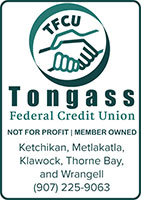|
Fish Factor Growth in the Mariculture Industry in AlaskaBy LAINE WELCH June 05, 2017
Applications for more than 1,000 acres of oyster and kelp farms were filed with the Department of Natural Resources by the April 30 deadline, far more than usual. Fifteen are for new farms in the Southeast, Southcentral and Westward regions of which seven plan to grow kelp exclusively. Two farms at Klawok also are adding kelp to their current oyster growing operations. “These permit applications are an indicator that there is developing interest and growth in the mariculture industry in Alaska,” said Linda Mattson with the Dept. of Commerce, Community and Economic Development upon announcing the numbers. Along with other state agencies, DCCED is an active part of the 11 member Alaska Mariculture Task Force established by an Administrative Order in 2016. The group’s mission is to provide Governor Walker with a comprehensive report for statewide mariculture expansion by March 1 of next year. Walker believes mariculture of shellfish and seaweeds is a viable means to diversify the economy and provide a $1 billion economy within 30 years. “The timing is right,” said task force co-chair Julie Decker of Wrangell. “It’s exciting that many of the applicants are young Alaska fishermen who are planning to have kelp be an adjunct to help diversify their fishing portfolio. Plus, shellfish are filter feeders and clean the waters and seaweed are a carbon sink and also produce really healthy products. I think we’re on a good path.” For existing aquatic farmers who are growing shellfish, kelp can provide them with a ready cash flow while they are waiting for up to three years for their bivalve crops to ripen. “Kelp only take about 90 days to grow so you can stagger your plantings and lengthen your seasons,” Decker added. Latest data from the Alaska Dept. of Fish and Game show that 54 aquatic farms, seven shellfish nurseries and two shellfish hatcheries are operating in Alaska, primarily growing Pacific oysters, with sales topping $1 million in 2014 and 2015. Production in 2015 of 10.6 million oysters fetched an average price of $9.84 per dozen, up $0.24 (2.5 percent) from 2014. “If just three-tenths of a percent of Alaska’s 35,000 miles of coastline was developed for oysters,” Decker said, “it could produce 1.3 billion oysters at 80 cents adding up to over $1 billion a year!” For blue mussels, production in 2015 showed a 74 percent increase to 16,688 pounds with a value of $5.27 per pound (down $0.47 from 2014) for a total of $70,800. In terms of the fledgling kelp industry, a first 15,000 pound harvest last month on a one acre plot at Kodiak owned by Nick and Stephanie Mangini paid out at roughly $10,000. Their business, Kodiak Island Sustainable Seaweed (KISS), plans to expand to 17 acres by next year. Find links to Alaska’s Mariculture Task Force at the ADF&G home page. Salmon at a glance: Want to know the values of Alaska’s salmon catches by every region? Or what products the fish are made into and where each goes to market? Find it at a glance in the latest Seafood Market Bulletin from the Alaska Seafood Marketing Institute. It’s compiled by the McDowell Group and also includes dock side values over a decade, and the rank of each species as a percent of Alaska’s harvests. Here’s a sampler: The projected pink salmon catch this summer of 142 million is up by more than one million fish over last year. The average pink price paid to fishermen last year was $.34 a pound. Frozen fish accounted for 44 percent of the pink salmon value last year with canned pinks at 37 percent. Chum catches this year should increase to about 17 million due to higher catches in western Alaska. Chums accounted for 15 percent of the Alaska salmon harvest and value over the past two years. The average dock price in 2016 was $.61 price per pound. Globally, chum production dropped by 30 percent due to decreased catches in Japan. That pushed up roe prices to over $14 a pound. Roe accounts for 37 percent of Alaska’s chum salmon value. Coho catches are expected to increase to 4.7 million this year. The average coho price to fishermen last year was $1.17 a pound. Coho are the latest running of all Alaska salmon species and account for three percent of the harvest and five percent of the value. Alaska’s sockeye catch is expected to decline 23 percent this year to about 41 million fish, and prices are expected to increase. Fishermen averaged $1.05 a pound last season, up $.23 from the previous year. Sockeye accounted for 34 percent of Alaska’s salmon harvest over the past two years and 55 percent of the value, ringing in at $302 million in 2016. The Chinook harvest is projected to drop by 27 percent this year and produce the smallest harvest in state history. The average Alaska price last year was $4.88 a pound, for a value of nearly $24 million. Ninety-nine percent of Alaska’s king salmon go to markets in the U.S. Alaska’s 2017 salmon harvest calls for 204 million fish, up nearly one million from last year. A mighty wind: A warmer than average April could mean an early return of Chinook salmon again to the Yukon River and fish watchers are on alert for signs of the first pulse to arrive around June 10. While low numbers mean no commercial fishery again this year, the kings are crucial for subsistence users. Even with 56 years of Yukon data, it’s a tough run to track because the timing is so unpredictable, said Phil Mundy, director of NOAA Fisheries’ Auke Bay lab in Juneau. Mundy has been studying Alaska salmon since the 1970s, but said it was Yukon elders who taught him how to fine tune the run timing. “They told me ‘the wind blows the fish in the river - everyone knows that, young man,’” he said, adding that Cook Inlet fishermen said the same thing about sockeye salmon. “They said, ‘it’s when the wind blows and you get the biggest tide closest to July 17. Everyone knows that.’ But we couldn’t figure out exactly how. I didn’t think the fish put up their dorsal fin like a sail to blow into the river, but there had to be something because they seemed to be right,” Mundy mused. “I used to count fish from airplanes, and I’ve seen at Cook Inlet and at Bristol Bay where you get the river water piling up against the marine water on the river plume,” he added. “Then you’ll see the salmon weaving in and out along the edge of the front between the fresh water and the salt water. I never knew why they were doing that. They will pile up if there is no wind to mix the fresh and salt water to make it brackish. They will pile up on that front until some other trigger, which we probably don’t understand, sends them all in.” In 2006 Mundy saw a scientific article that focused on how salmon make the change from fresh to salt water and vice versa. “There’s this thing called a calcium ion switch, and it is triggered by alternating exposure to different salinities,” he explained. “Young salmon can’t swim straight into salt water because it will kill them, and it’s the same for adults in the ocean returning to their home streams. They have to have alternating exposure to different salinities.” At the Yukon, Mundy said the wind mixing the water even tops early ice melts as the best indicator of the salmon arrivals. Today, satellite readings from the Alaska Ocean Observing System make predictions easier and more reliable.
Laine Welch ©2017 Laine can be reached
at msfish[AT]alaska.com
Representations of fact and opinions in comments posted below are solely those of the individual posters and do not represent the opinions of Sitnews.
SitNews ©2017 Stories In The News Ketchikan, Alaska
|
|||




